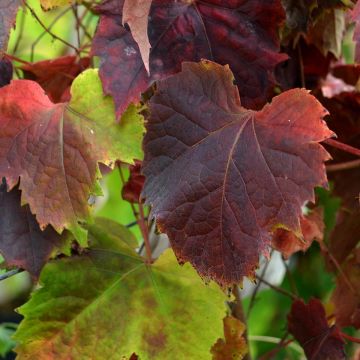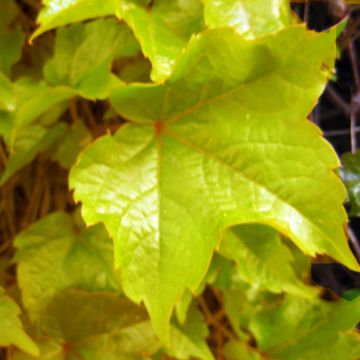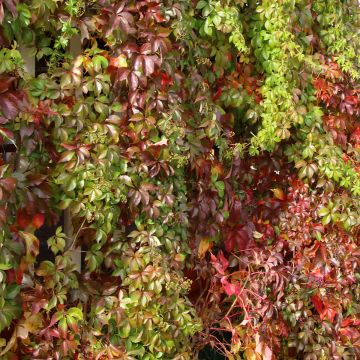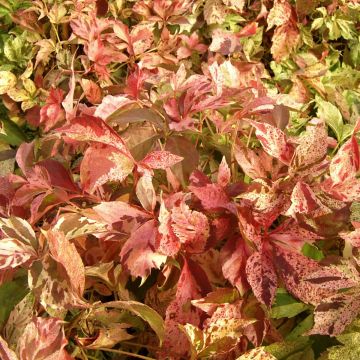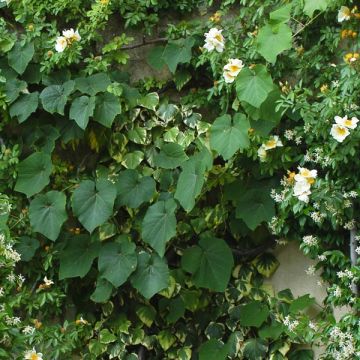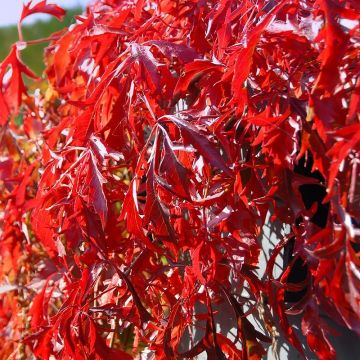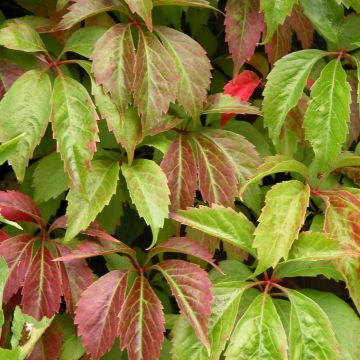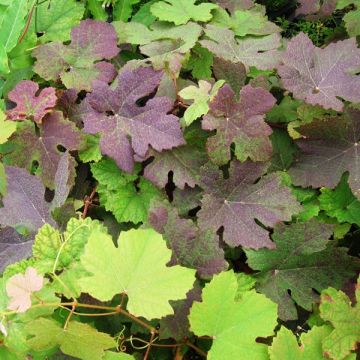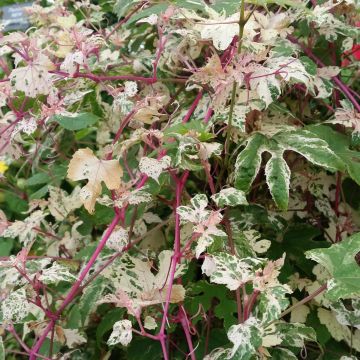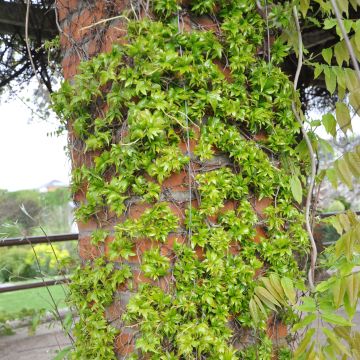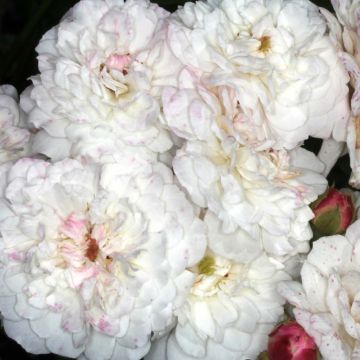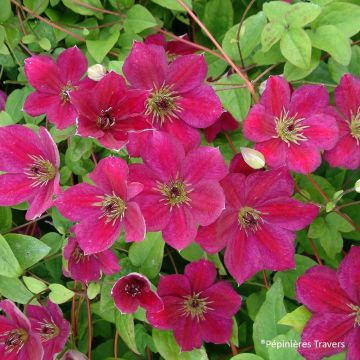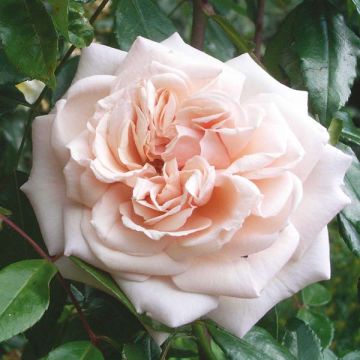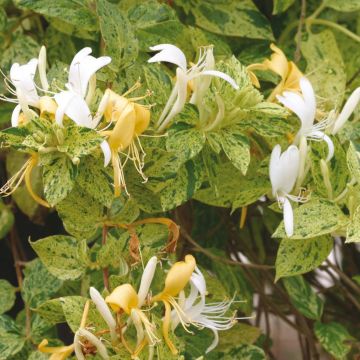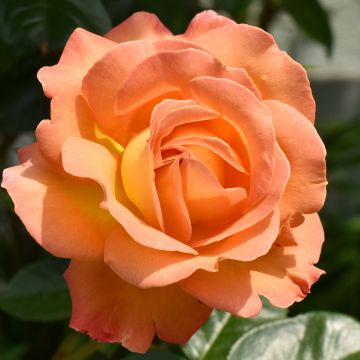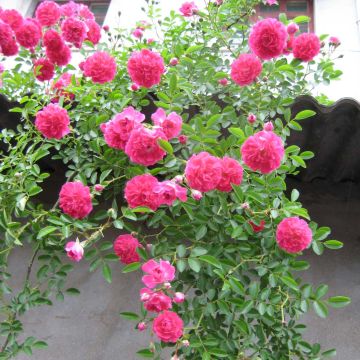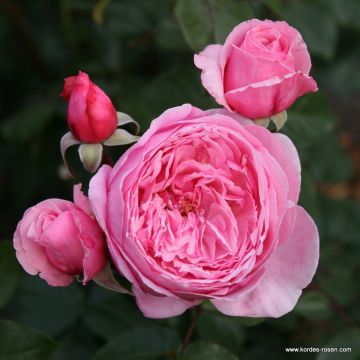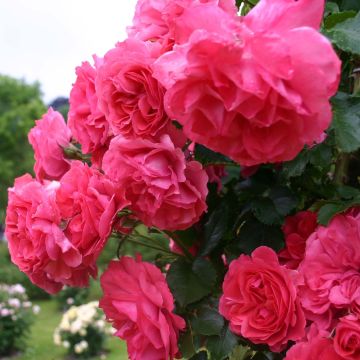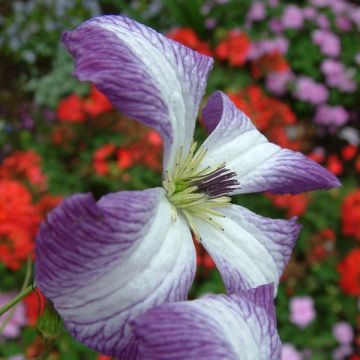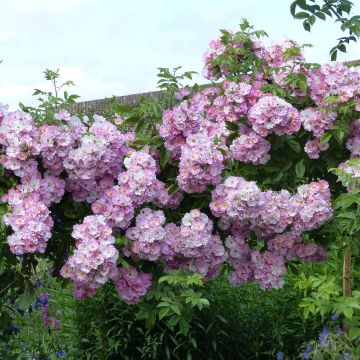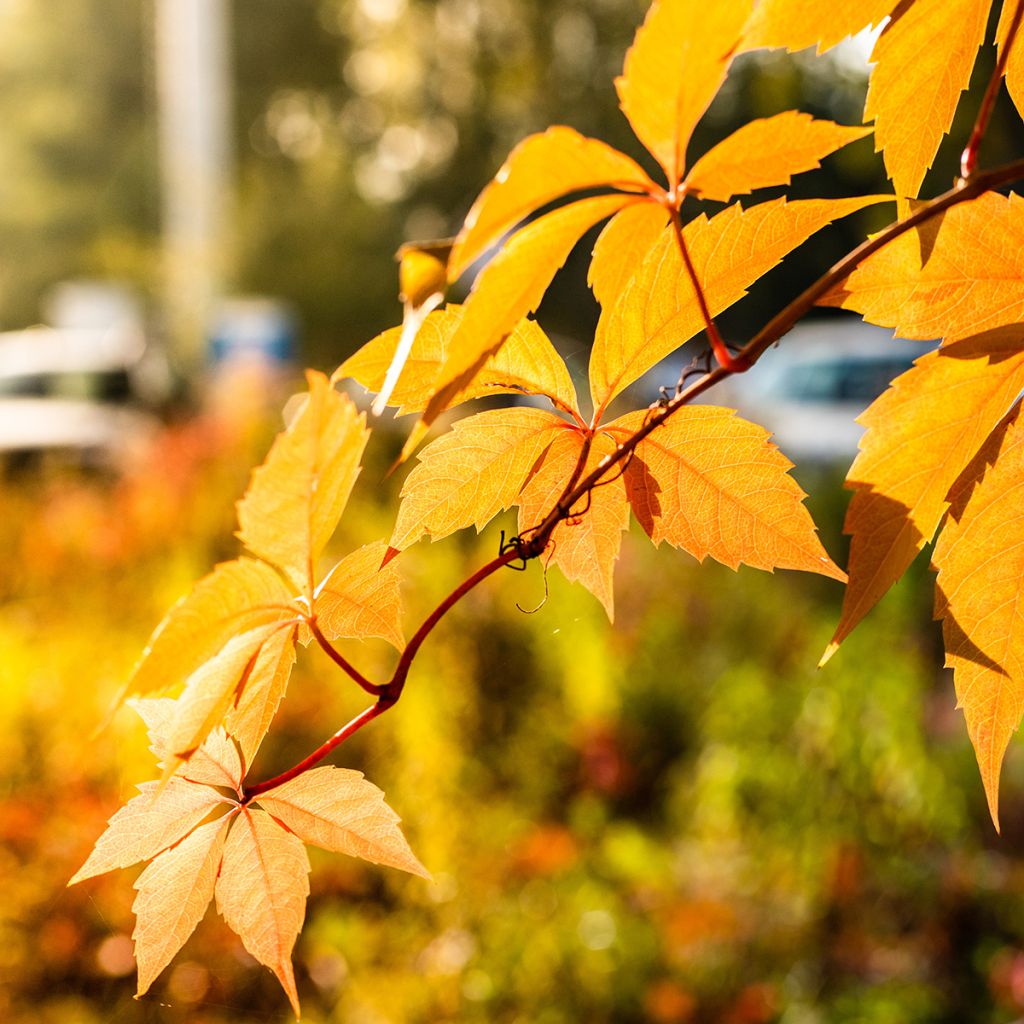

Parthenocissus quinquefolia Yellow Wall- Virginia Creeper
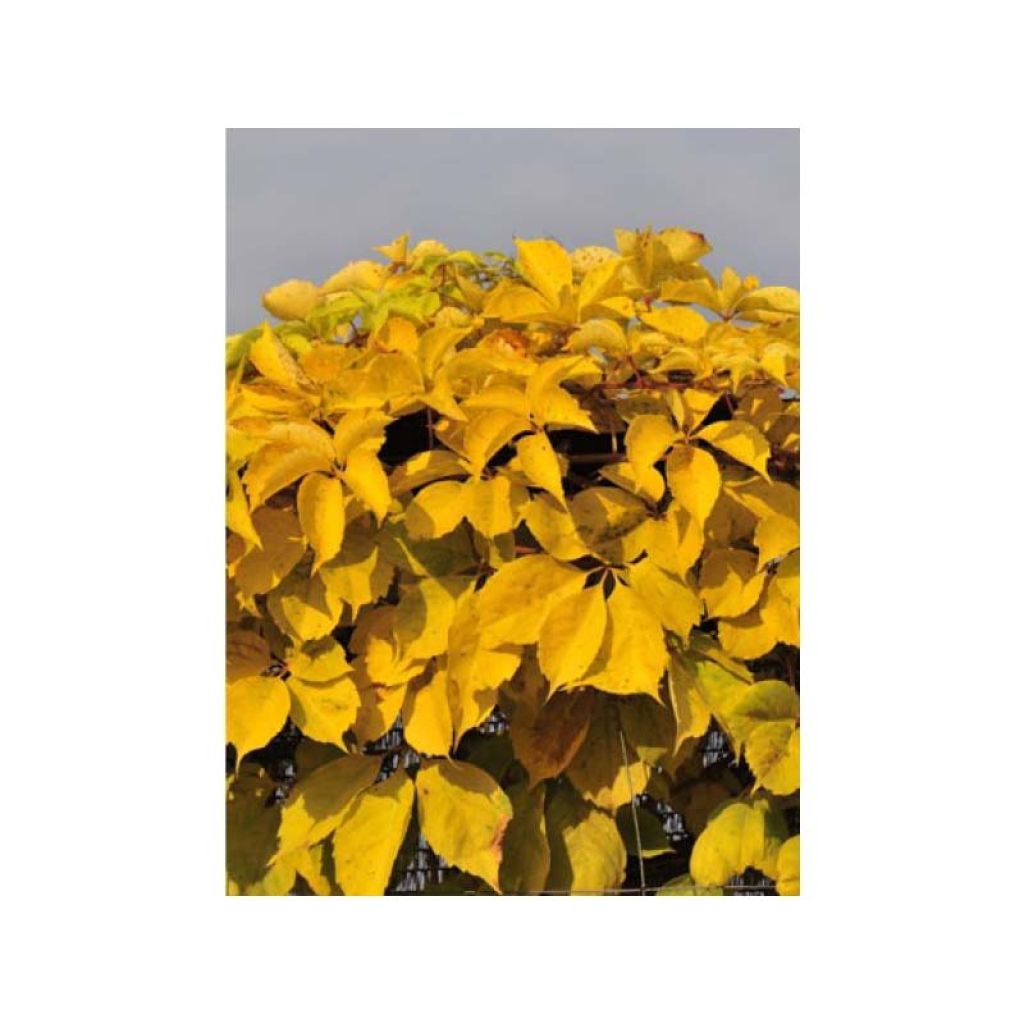

Parthenocissus quinquefolia Yellow Wall- Virginia Creeper
Parthenocissus quinquefolia Yellow Wall- Virginia Creeper
Parthenocissus quinquefolia 'Yellow Wall'
Virginia Creeper, Five-leaved Ivy, American Ivy
Order in the next for dispatch today!
Dispatch by letter from €3.90.
Delivery charge from €5.90 Oversize package delivery charge from €6.90.
Current delivery delay: 1 day.
More information
This item is not available in your country.
Schedule delivery date,
and select date in basket
This plant carries a 6 months recovery warranty
More information
We guarantee the quality of our plants for a full growing cycle, and will replace at our expense any plant that fails to recover under normal climatic and planting conditions.
From €5.90 for pickup delivery and €6.90 for home delivery
Express home delivery from €8.90.
From €5.90 for pickup delivery and €6.90 for home delivery
Express home delivery from €8.90.
Does this plant fit my garden?
Set up your Plantfit profile →
Description
The Parthenocissus quinquefolia 'Yellow Wall' is a variety of Virginia creeper that stands out with its bright yellow autumn foliage. This vigorous climbing plant, which loses its leaves in winter, is capable of covering a wall or pergola within three years, transforming any support into a golden wall at the end of the season. Its stems cling thanks to tendrils equipped with hooks that do not damage their support but will need to be regularly trained. Very hardy, adaptable to the soil and indifferent to the exposure, it is an excellent variety that will pair beautifully with its sister, the 'Red Wall' with scarlet autumn foliage.
The Parthenocissus quinquefolia belongs to the large family of Vitaceae, and is closely related to our grape vines. The species is native to the United States, particularly Oregon. The cultivar 'Yellow Wall' differs only in the colour of its autumn foliage. It is a fast-growing climbing bush, which develops long and sturdy woody climbing stems, capable of reaching heights and widths of over 12m (39ft). The deciduous foliage appears in spring and falls in October-November. In spring, the young shoots are reddish in color. They unfold into thick leaves with 3 to 7 (usually 5) elliptical and dentate leaflets, measuring 5 to 14cm (2 to 6in) long. These leaves are green in spring and summer, then turn golden yellow before falling. On the stem, opposite the leaf insertion point, either a ramified tendril or an inflorescence develops. The young branches curl, forming a kind of small hook. It is common for a small adhesive ball to form upon contact with a surface, allowing the stem to attach more securely. The flowering takes place in June-July, in the form of small insignificant clusters of green flowers. After pollination by insects, small round fruits of black-blue colour form, which are not edible by humans but highly appreciated by birds.
With its abundant and incredibly bright vegetation in October, the Parthenocissus quinquefolia 'Yellow Wall' is unmatched in invading an old hedge, covering even a very shady wall, a pergola, or climbing in tall trees. It can be paired with a vigorous Clematis montana 'Tetrarose', a variegated yellow 'Goldheart' ivy, or even a 'Winter Ruby' star jasmine, for example.
Report an error about the product description
Parthenocissus quinquefolia Yellow Wall- Virginia Creeper in pictures


Plant habit
Flowering
Foliage
Botanical data
Parthenocissus
quinquefolia
'Yellow Wall'
Vitaceae
Virginia Creeper, Five-leaved Ivy, American Ivy
North America
Other Parthenocissus - Virginia Creeper
Planting and care
The Parthenocissus quinquefolia 'Yellow Wall' should be planted in autumn or spring in a regular but deep, well-worked and well-drained soil in a good exposure. Shade and semi-shade are also well tolerated by the plant. Keep the soil moist and water regularly during the first months to help your vine establish itself, especially in abnormally dry weather. Be careful not to damage the root ball! Once well rooted in deep soil, this plant does not require watering in all our regions. Train the young plants until they can cling on their own. Monitor the growth of this climbing plant and pinch off any misdirected voluble stems.
Planting period
Intended location
Care
This item has not been reviewed yet - be the first to leave a review about it.
Foolproof climbers
Haven't found what you were looking for?
Hardiness is the lowest winter temperature a plant can endure without suffering serious damage or even dying. However, hardiness is affected by location (a sheltered area, such as a patio), protection (winter cover) and soil type (hardiness is improved by well-drained soil).

Photo Sharing Terms & Conditions
In order to encourage gardeners to interact and share their experiences, Promesse de fleurs offers various media enabling content to be uploaded onto its Site - in particular via the ‘Photo sharing’ module.
The User agrees to refrain from:
- Posting any content that is illegal, prejudicial, insulting, racist, inciteful to hatred, revisionist, contrary to public decency, that infringes on privacy or on the privacy rights of third parties, in particular the publicity rights of persons and goods, intellectual property rights, or the right to privacy.
- Submitting content on behalf of a third party;
- Impersonate the identity of a third party and/or publish any personal information about a third party;
In general, the User undertakes to refrain from any unethical behaviour.
All Content (in particular text, comments, files, images, photos, videos, creative works, etc.), which may be subject to property or intellectual property rights, image or other private rights, shall remain the property of the User, subject to the limited rights granted by the terms of the licence granted by Promesse de fleurs as stated below. Users are at liberty to publish or not to publish such Content on the Site, notably via the ‘Photo Sharing’ facility, and accept that this Content shall be made public and freely accessible, notably on the Internet.
Users further acknowledge, undertake to have ,and guarantee that they hold all necessary rights and permissions to publish such material on the Site, in particular with regard to the legislation in force pertaining to any privacy, property, intellectual property, image, or contractual rights, or rights of any other nature. By publishing such Content on the Site, Users acknowledge accepting full liability as publishers of the Content within the meaning of the law, and grant Promesse de fleurs, free of charge, an inclusive, worldwide licence for the said Content for the entire duration of its publication, including all reproduction, representation, up/downloading, displaying, performing, transmission, and storage rights.
Users also grant permission for their name to be linked to the Content and accept that this link may not always be made available.
By engaging in posting material, Users consent to their Content becoming automatically accessible on the Internet, in particular on other sites and/or blogs and/or web pages of the Promesse de fleurs site, including in particular social pages and the Promesse de fleurs catalogue.
Users may secure the removal of entrusted content free of charge by issuing a simple request via our contact form.
The flowering period indicated on our website applies to countries and regions located in USDA zone 8 (France, the United Kingdom, Ireland, the Netherlands, etc.)
It will vary according to where you live:
- In zones 9 to 10 (Italy, Spain, Greece, etc.), flowering will occur about 2 to 4 weeks earlier.
- In zones 6 to 7 (Germany, Poland, Slovenia, and lower mountainous regions), flowering will be delayed by 2 to 3 weeks.
- In zone 5 (Central Europe, Scandinavia), blooming will be delayed by 3 to 5 weeks.
In temperate climates, pruning of spring-flowering shrubs (forsythia, spireas, etc.) should be done just after flowering.
Pruning of summer-flowering shrubs (Indian Lilac, Perovskia, etc.) can be done in winter or spring.
In cold regions as well as with frost-sensitive plants, avoid pruning too early when severe frosts may still occur.
The planting period indicated on our website applies to countries and regions located in USDA zone 8 (France, United Kingdom, Ireland, Netherlands).
It will vary according to where you live:
- In Mediterranean zones (Marseille, Madrid, Milan, etc.), autumn and winter are the best planting periods.
- In continental zones (Strasbourg, Munich, Vienna, etc.), delay planting by 2 to 3 weeks in spring and bring it forward by 2 to 4 weeks in autumn.
- In mountainous regions (the Alps, Pyrenees, Carpathians, etc.), it is best to plant in late spring (May-June) or late summer (August-September).
The harvesting period indicated on our website applies to countries and regions in USDA zone 8 (France, England, Ireland, the Netherlands).
In colder areas (Scandinavia, Poland, Austria...) fruit and vegetable harvests are likely to be delayed by 3-4 weeks.
In warmer areas (Italy, Spain, Greece, etc.), harvesting will probably take place earlier, depending on weather conditions.
The sowing periods indicated on our website apply to countries and regions within USDA Zone 8 (France, UK, Ireland, Netherlands).
In colder areas (Scandinavia, Poland, Austria...), delay any outdoor sowing by 3-4 weeks, or sow under glass.
In warmer climes (Italy, Spain, Greece, etc.), bring outdoor sowing forward by a few weeks.


































